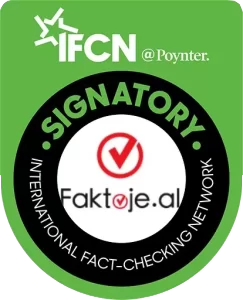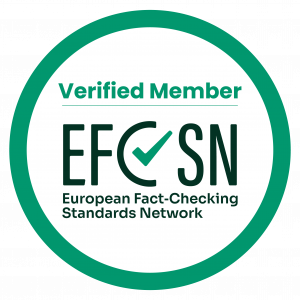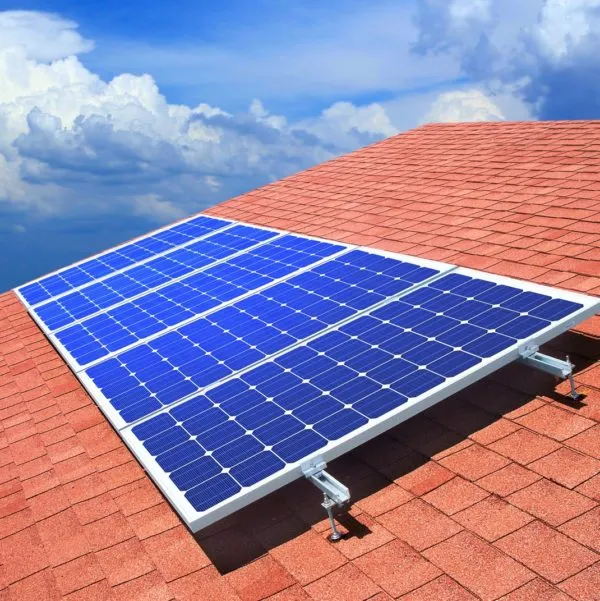AZMI STRINGA
The target for public funding for education at 5% of the GDP has not been reached, on the contrary during 2019-2020 when the earthquake and pandemic occurred funding went below 3 percent. This failure is also confirmed by the UNICEF report and the figures of the Ministry of Education. At this level Albania falls very behind European countries as the country with the lowest public funding in a field that is considered vital to next generations and society as a whole.
In its program for 2013-2017 the Albanian government considered education to be one of the best economic practices and an essential system that guarantees the thorough development of the country. This would also guarantee the long-term competitiveness of our country’s human capital. This is why the government program set the target of 5% of the GDP in public funding for education in order to provide quality education for every child, regardless of their origin, family conditions or economic situation.
The increase of public funding for education was persistently requested by students during the protests of 2018 that induced the “Pact for University” with the government. Students required an increase in education budget to 5% of the GDP, with the purpose of halving study fees at every study level and improving teaching and infrastructure (universities and dormitories).”
In a 2019 report, which aimed to assess the current Pre-University Education Strategy 2014-2020, UNICEF stated that Albania is far from the 2020 target of 3% of the GDP for public expenditures in pre-university education and 5% in education as a whole.
Based on data published by the Ministry of Education, below you will find the public expenditures in education through the years, compared to the target set by the government.
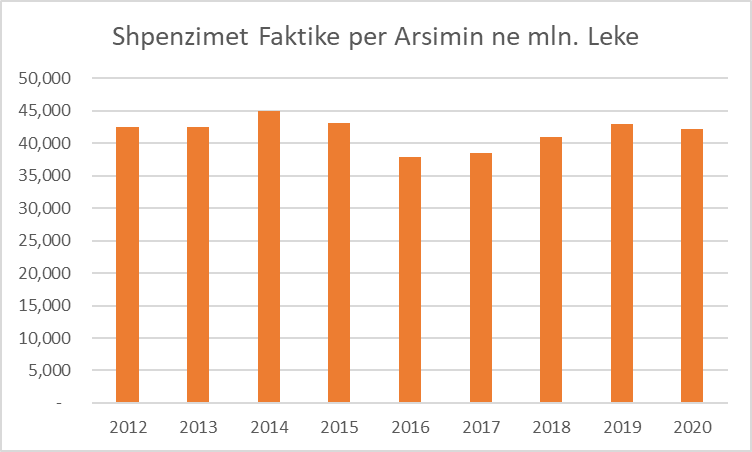

Also UNICEF states that::
“During recent years, expenditures on education have remained at 3 percent of the GDP, while the OECD average is around 5 percent.”
To understand how much Albania spends on education compared to other European countries, below we’ll display Eurostat’s data on EU countries compared to Albania.
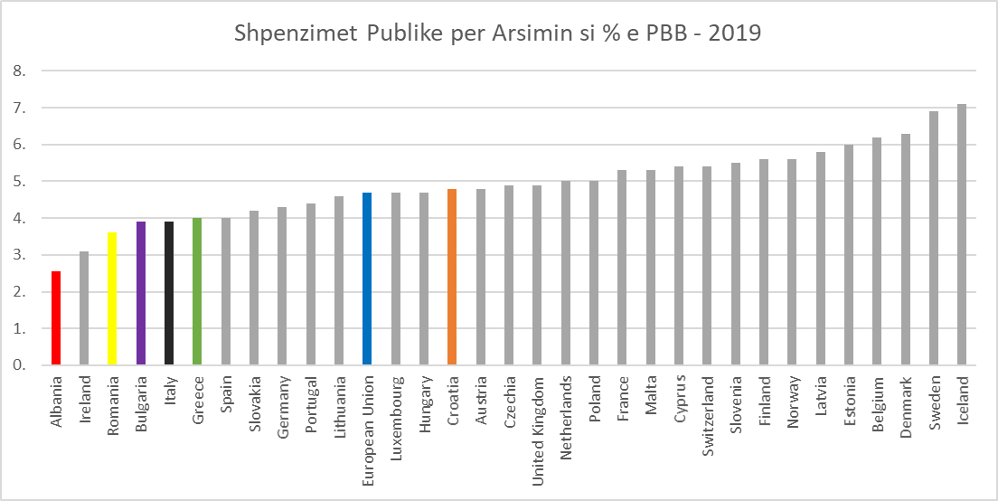
As you can see Albania spends less education public funds that all other EU countries. The average of EU countries in 2019 was 4.7% of the GDP compared to Albania’s 2.56% of the GDP in public funds for education.
The above colors show EU countries located near or in the same region as Albania, to show our competitiveness in the region. For countries such as Romania, Bulgaria, Greece, Croatia, and Italy, the chart below shows the progress of their education expenditures over the years compared to Albania.

Investing in education by managing public finances wisely is very important because this is how we provide opportunities for the younger generation; make our country and economy more competitive by narrowing the gap with European countries as well as contribute to the stability and quality of public finances and services (debt, education, pensions, health, etc.). This is a very important topic in the conditions of an economic crisis due to the pandemic. Not only is the new generation exposed to the crisis hit, but it is also facing educational obstacles due to the restriction of the pandemic in the sector that is receiving less investment at the moment. This is the generation that due to the hit in public finances will be responsible and will carry the burden of a very high public debt in the future. As a result, Albania still has a lot of work to do to reduce the gap with developed and EU countries. This is important not only for the competitiveness and well-being of the younger generation, but of society as a whole.


